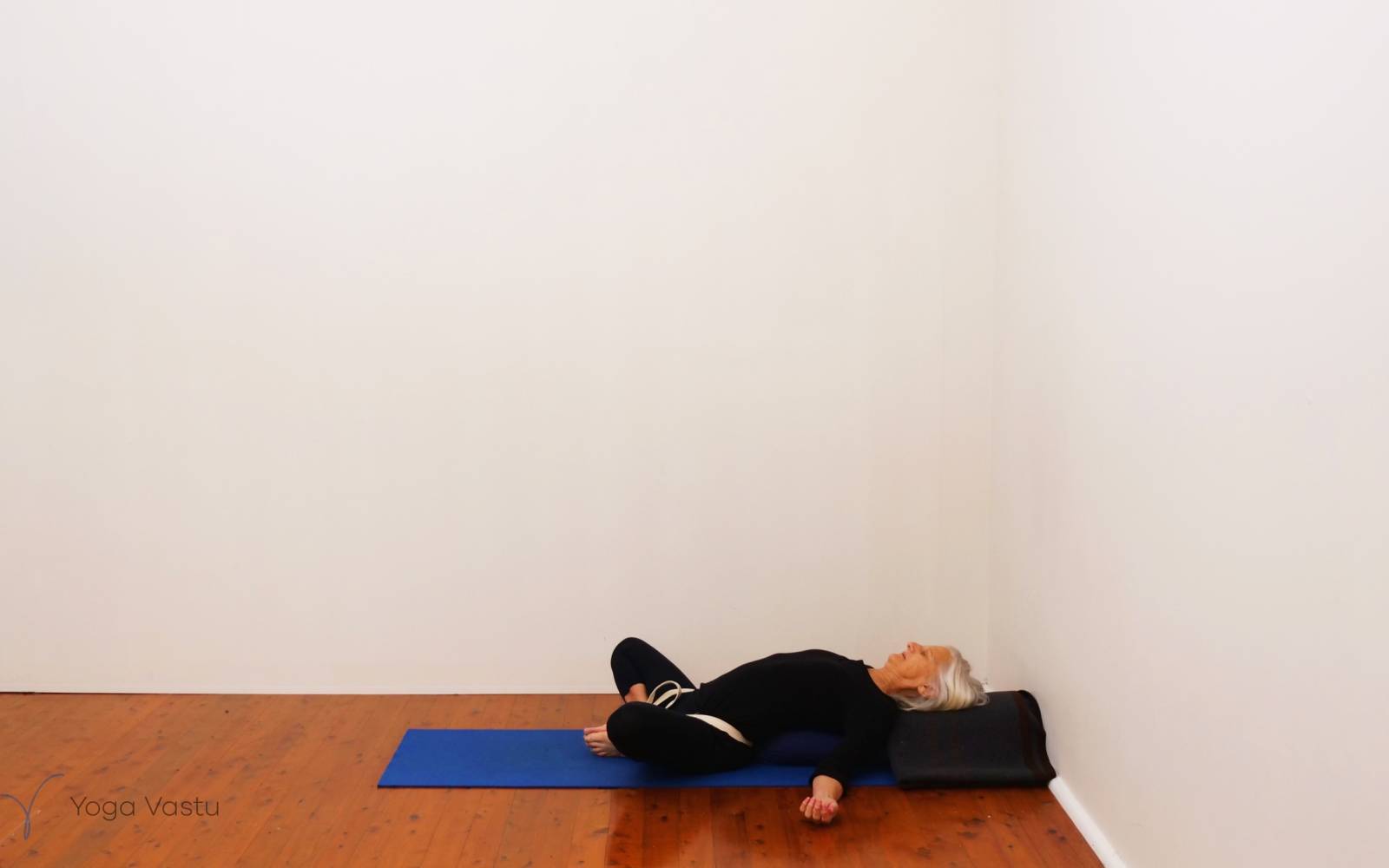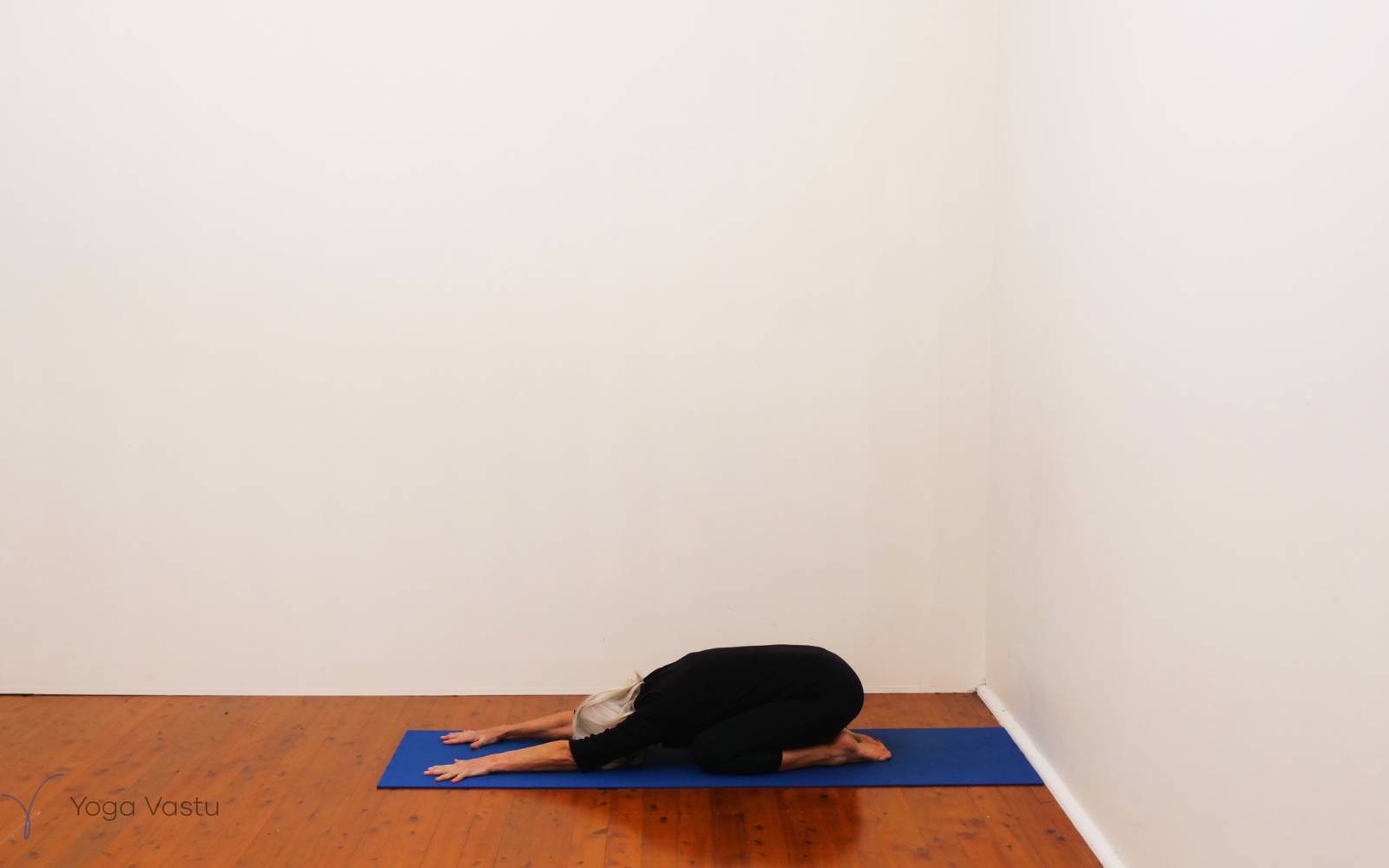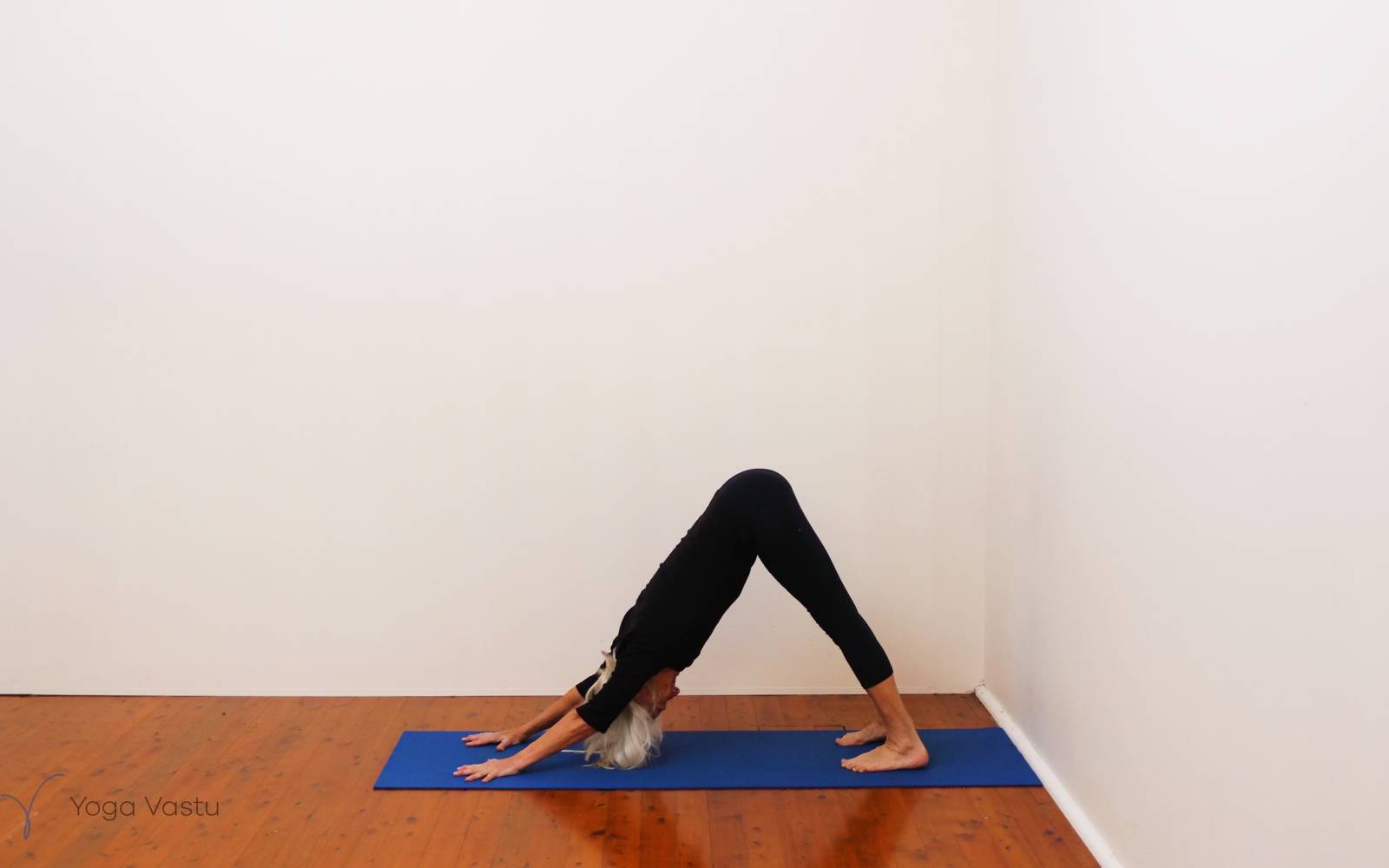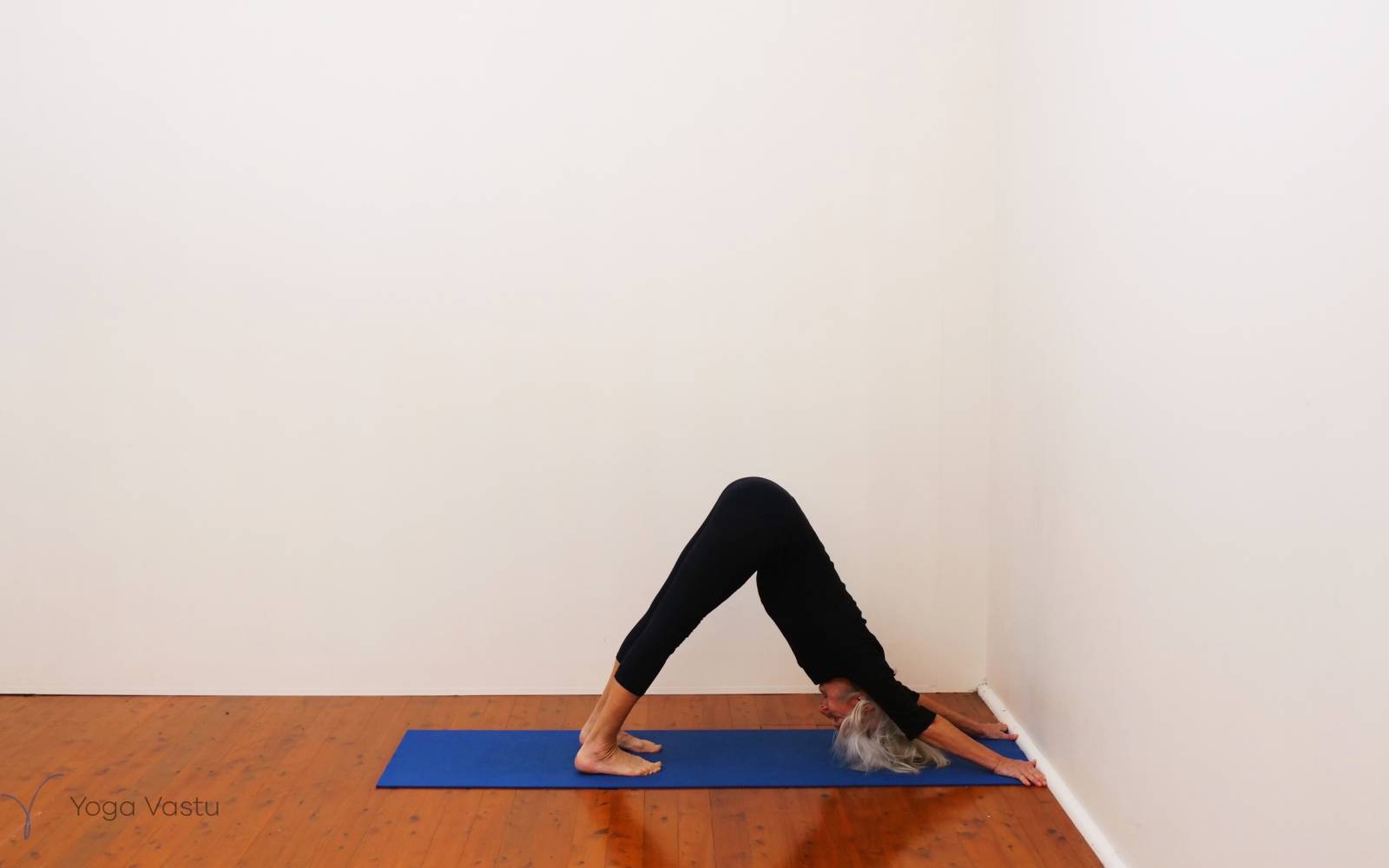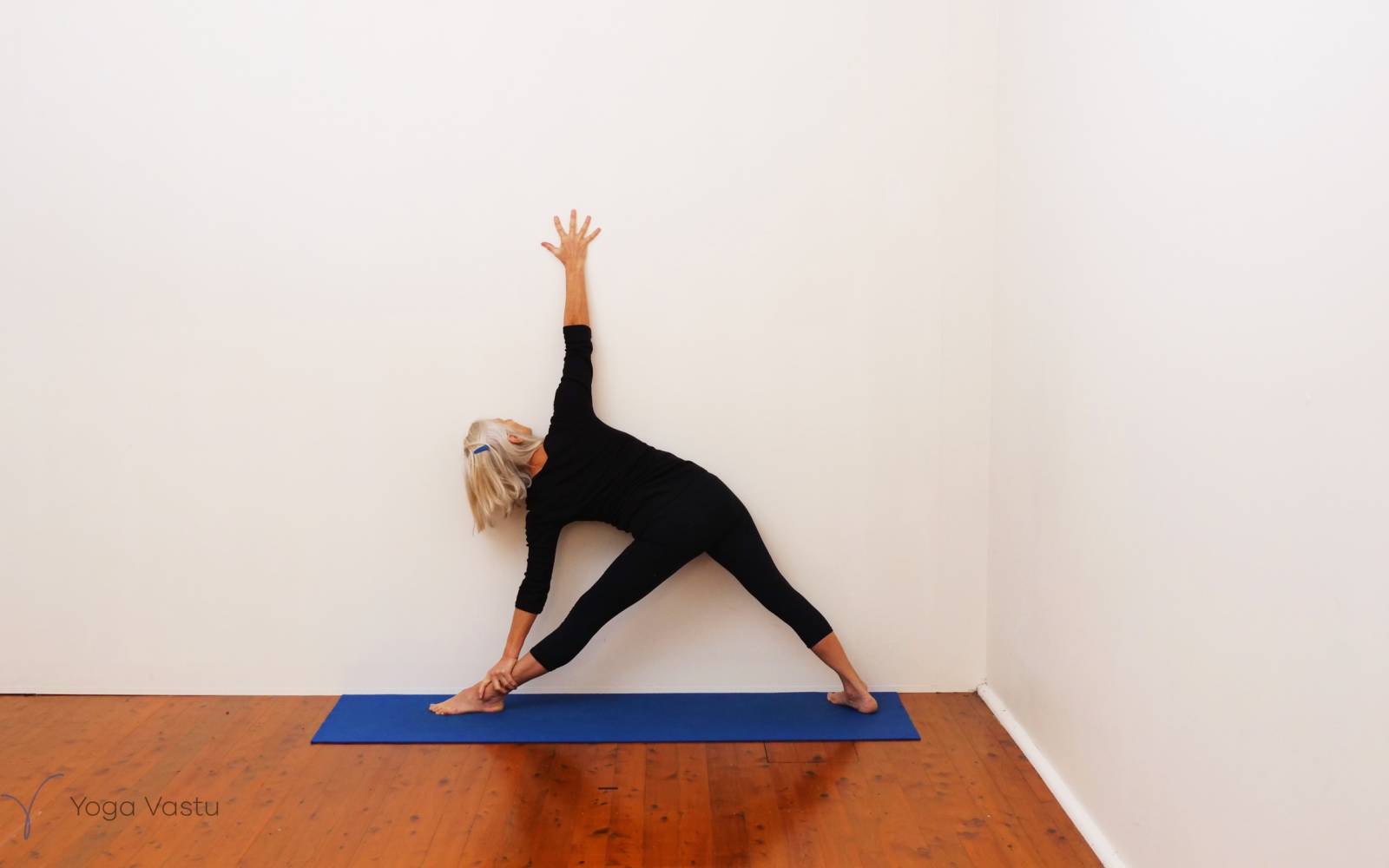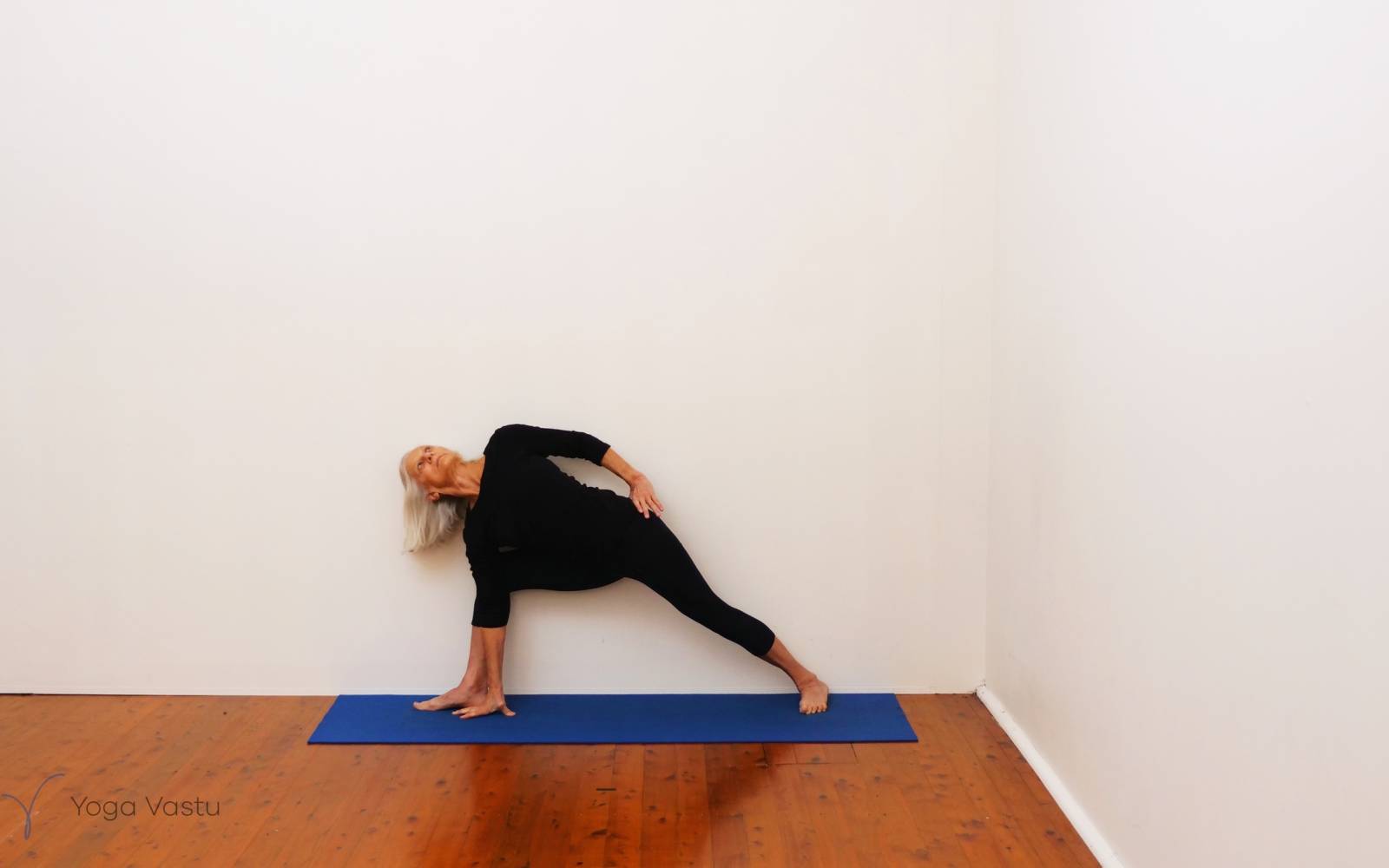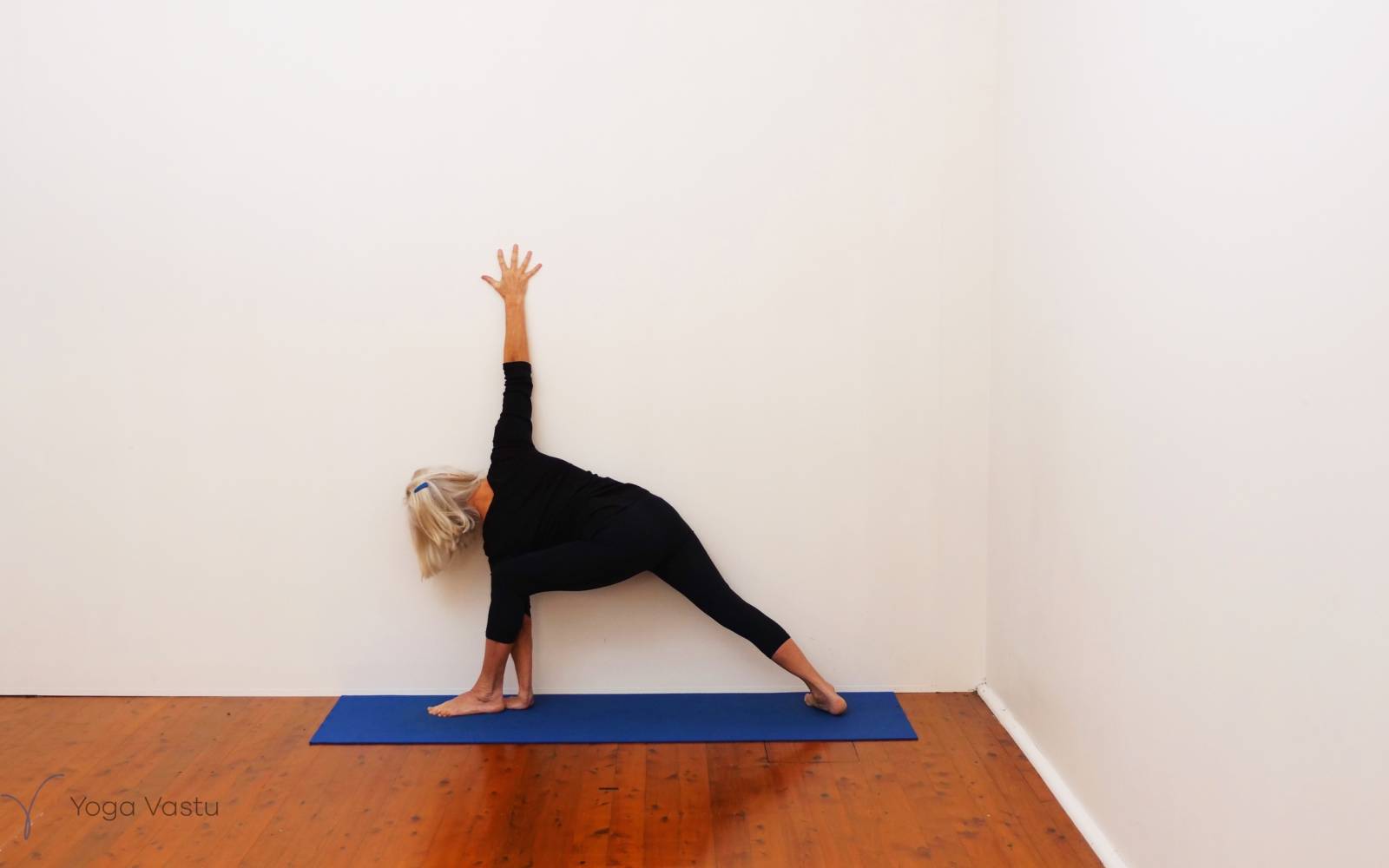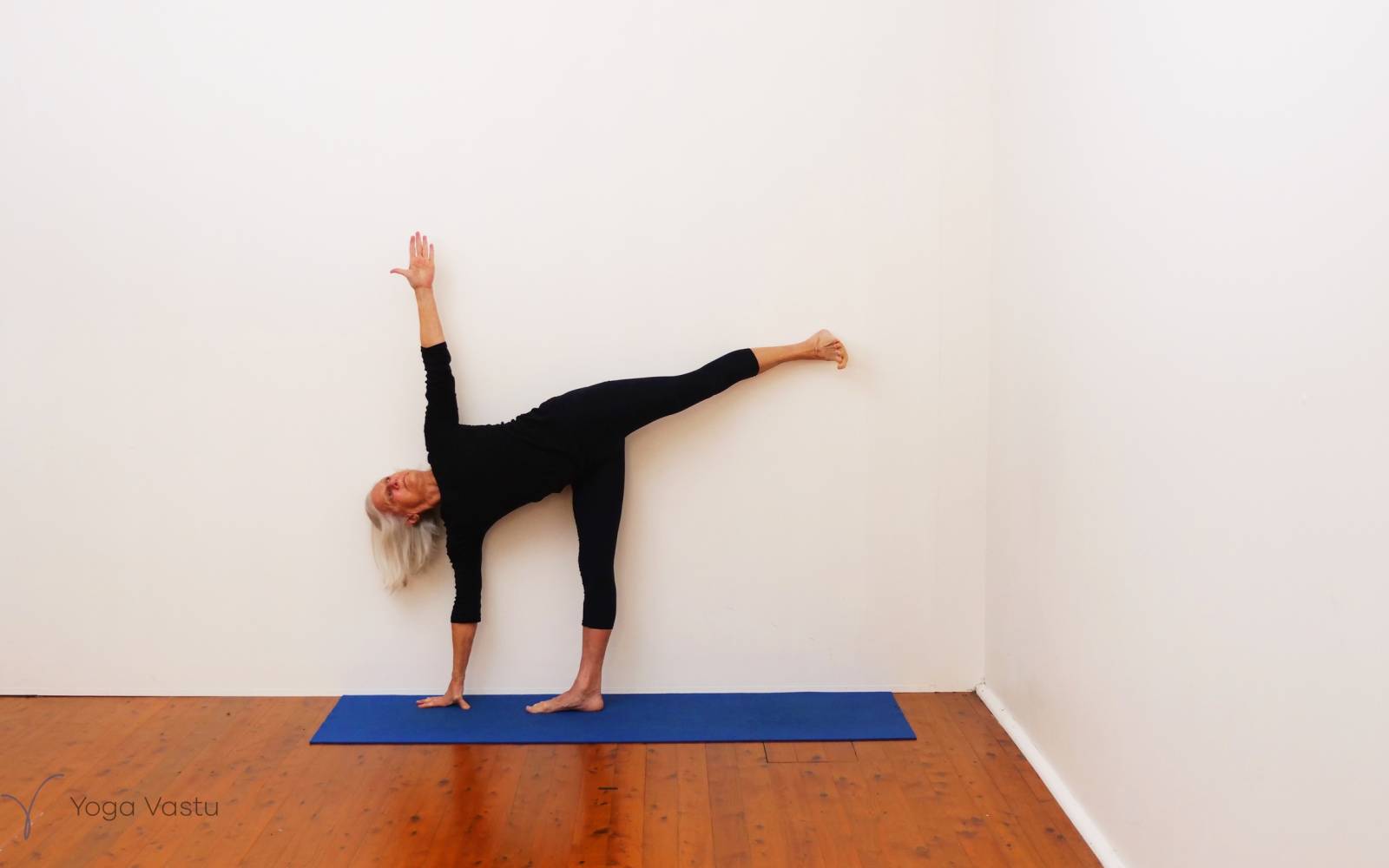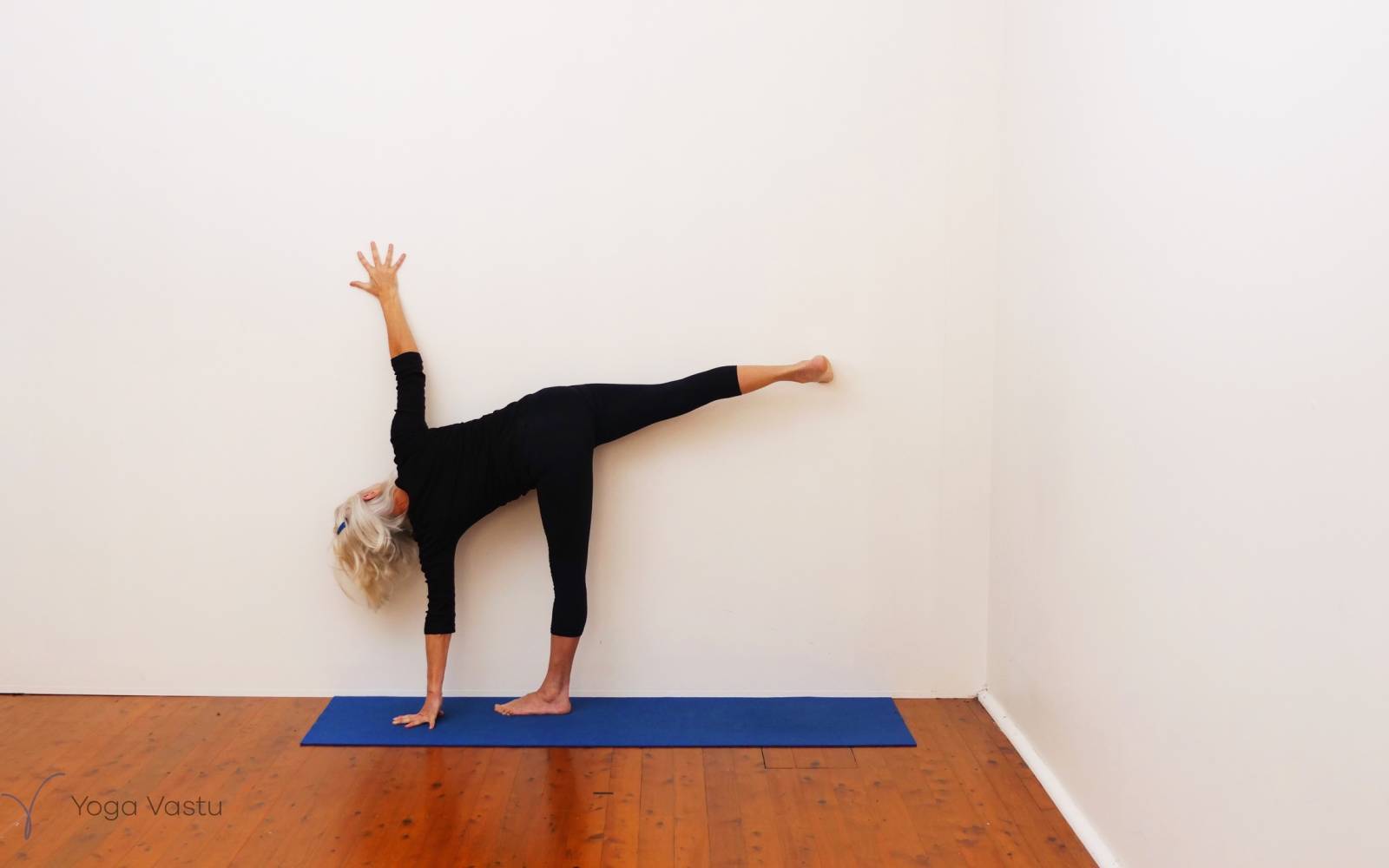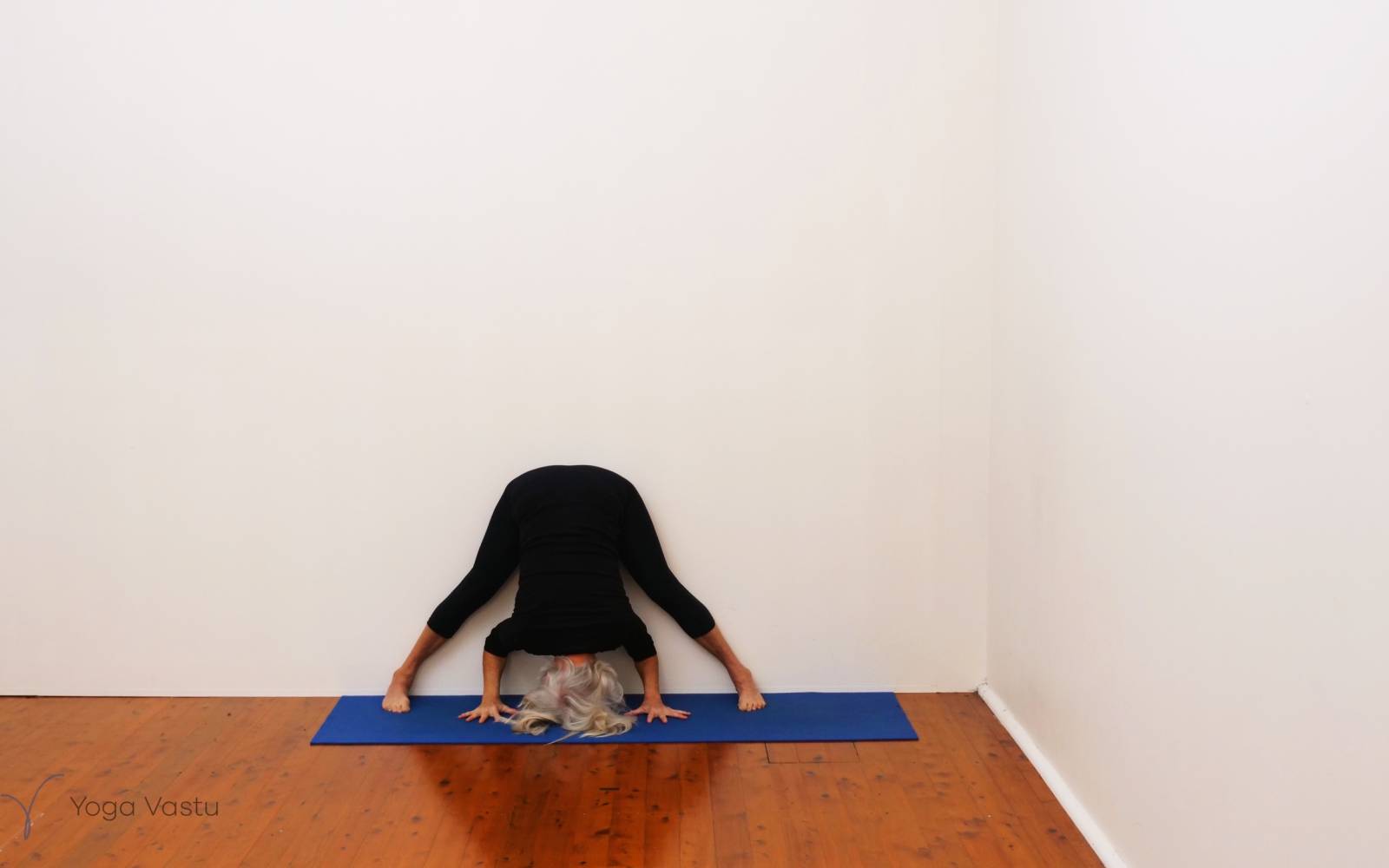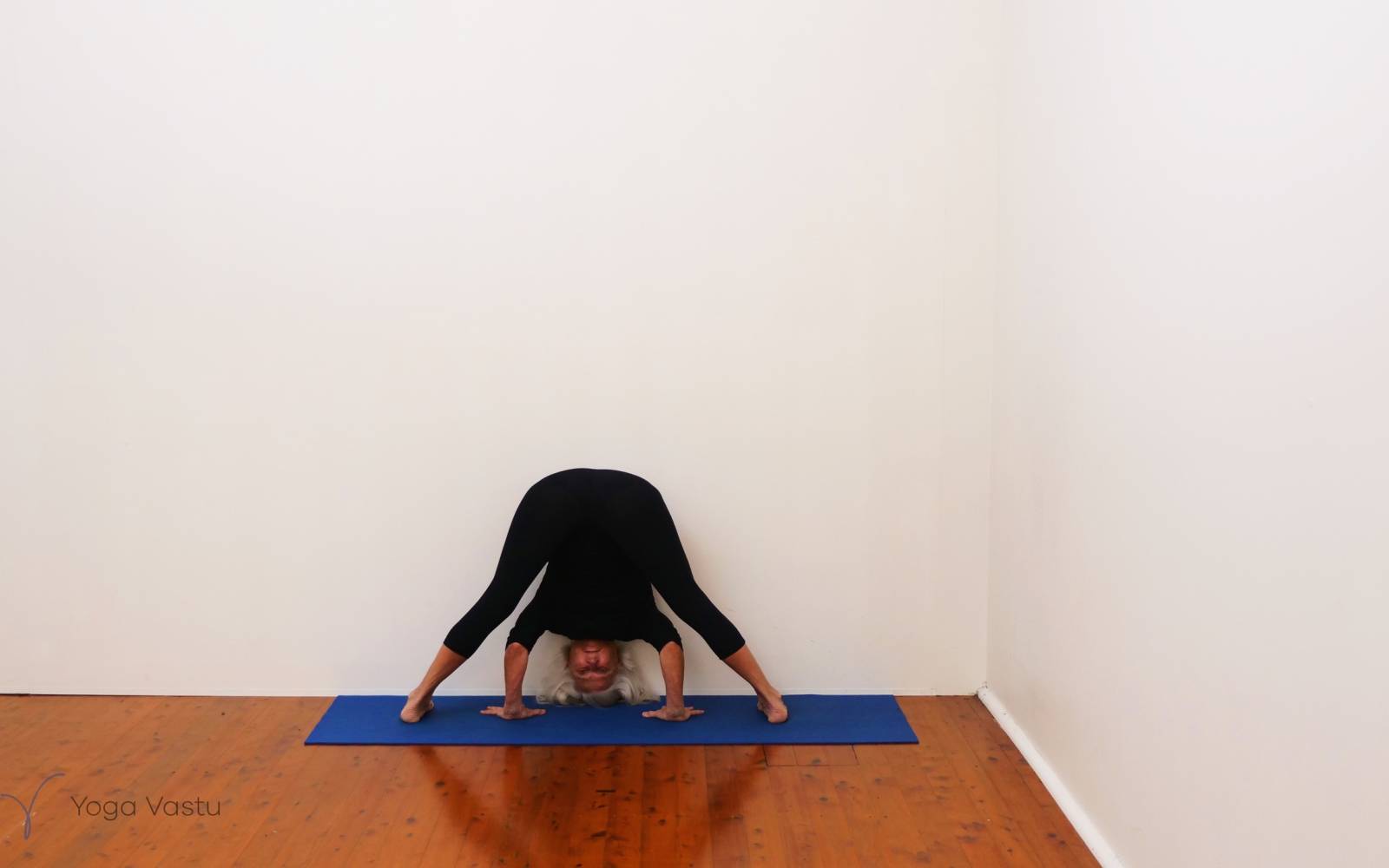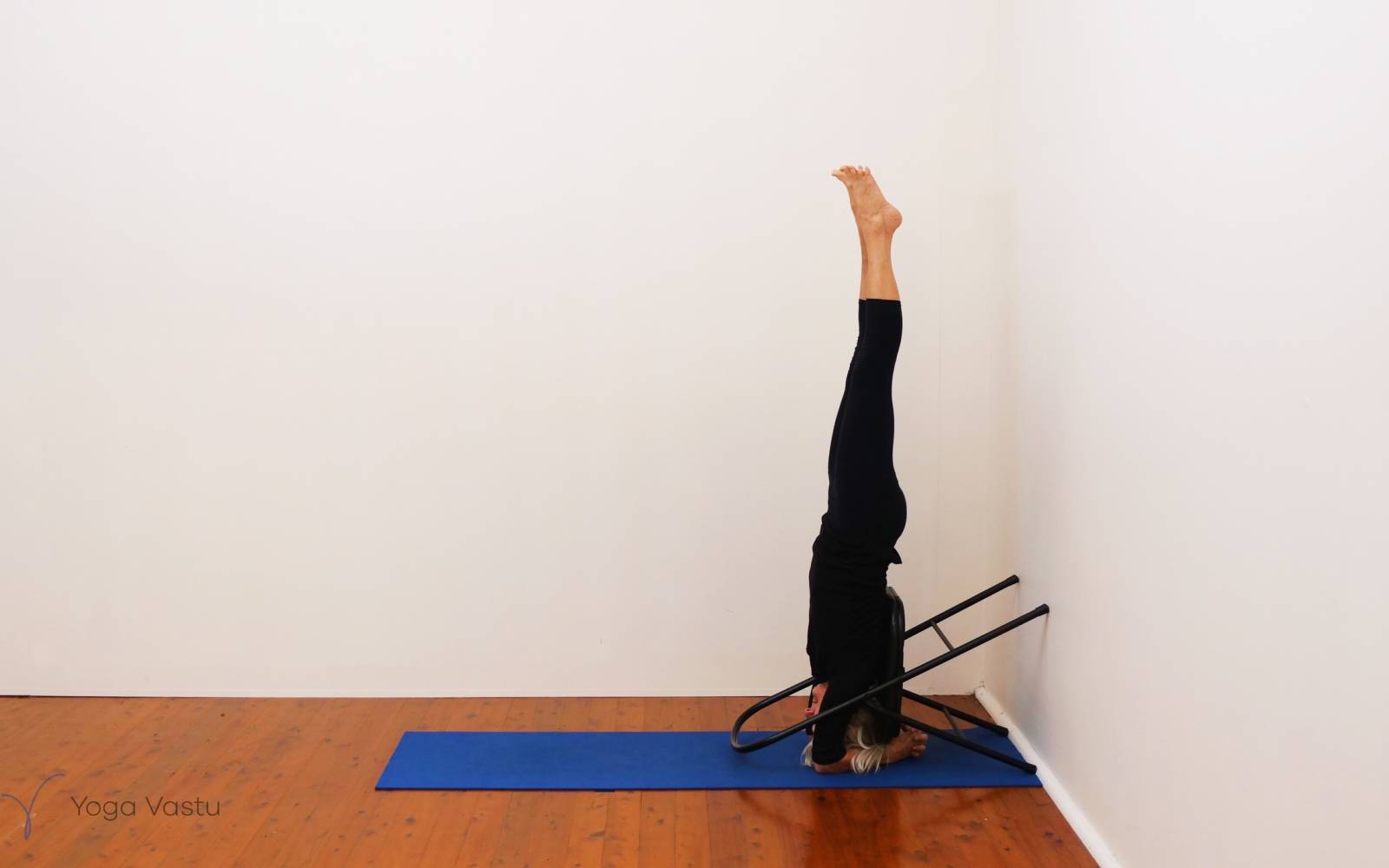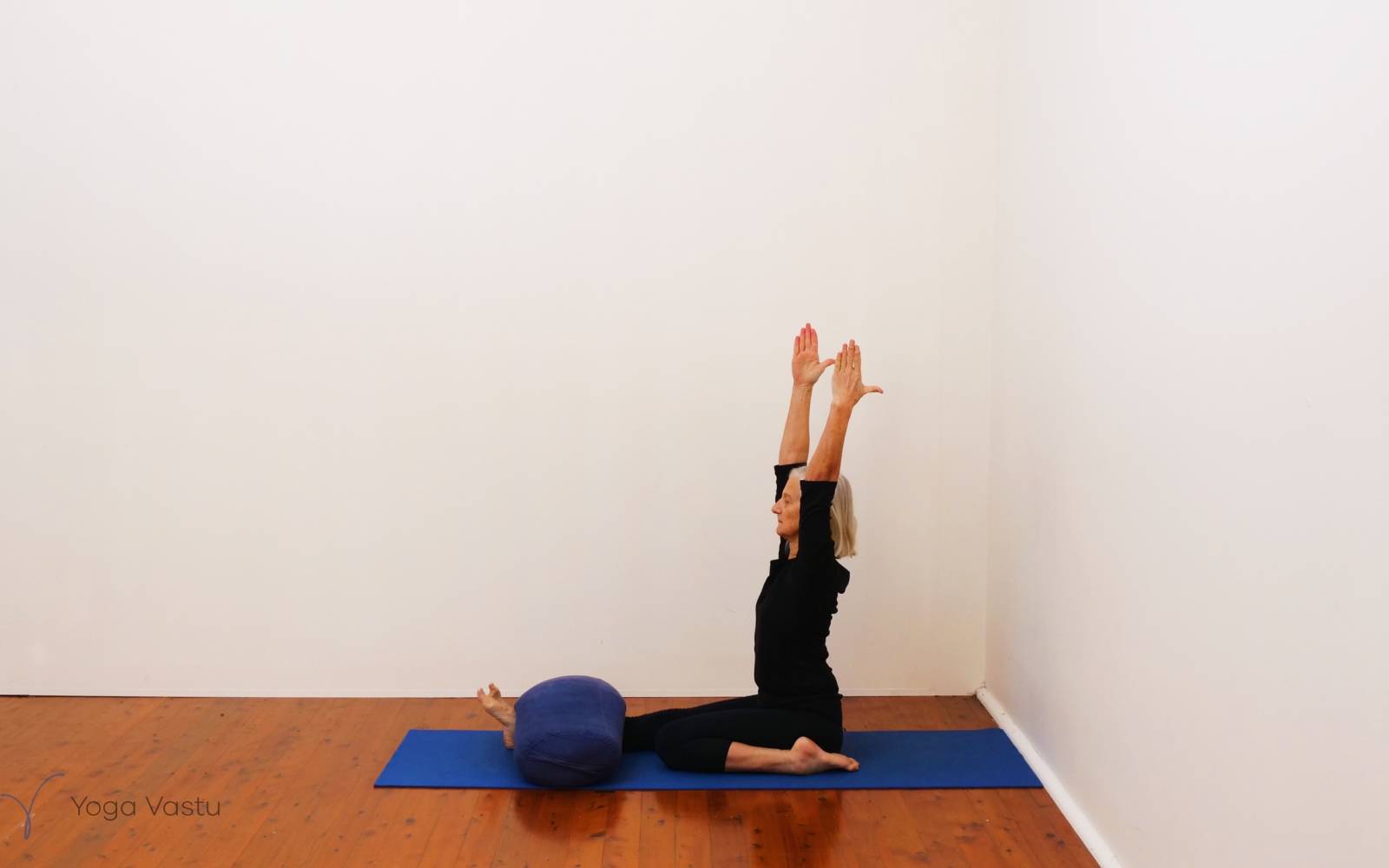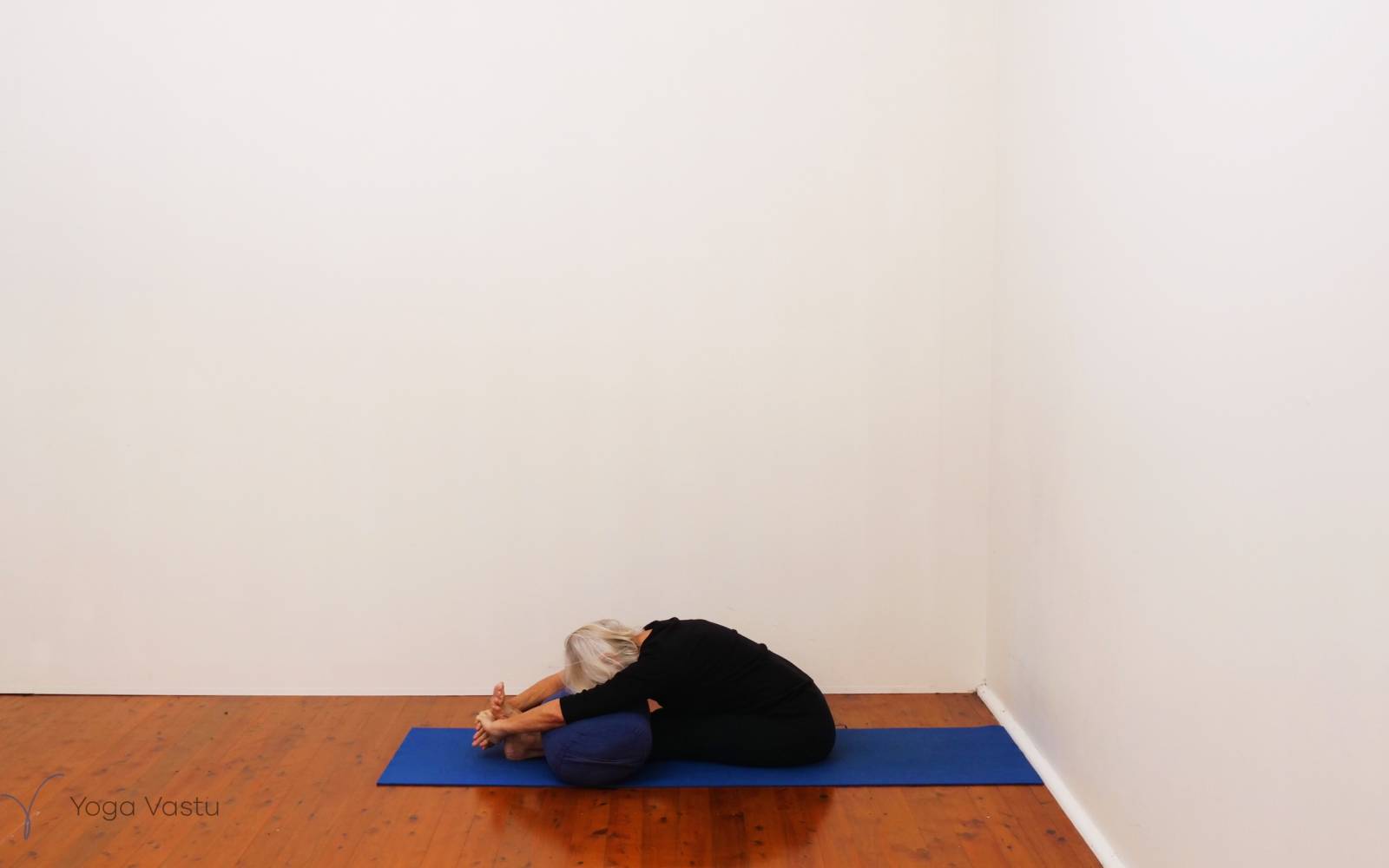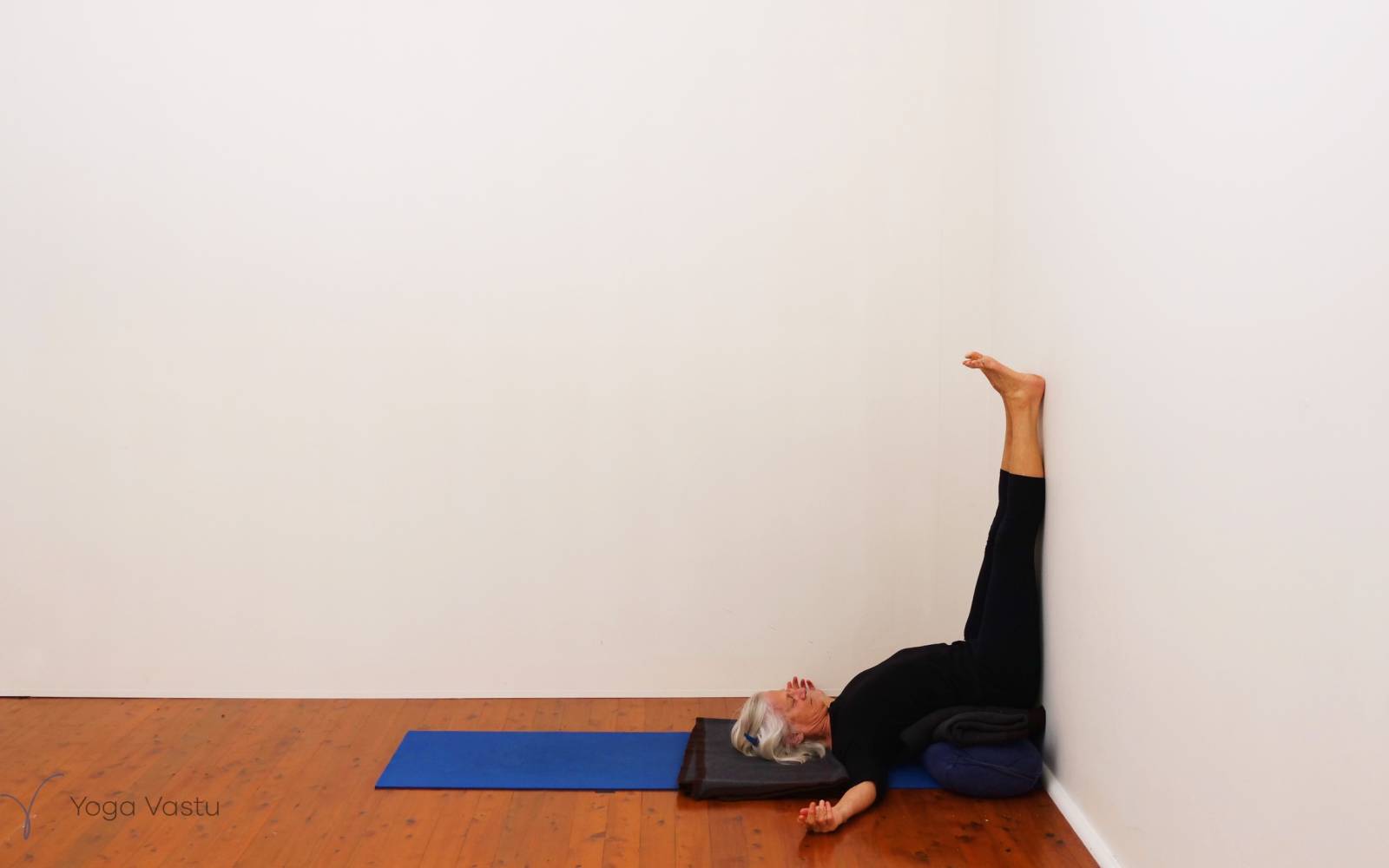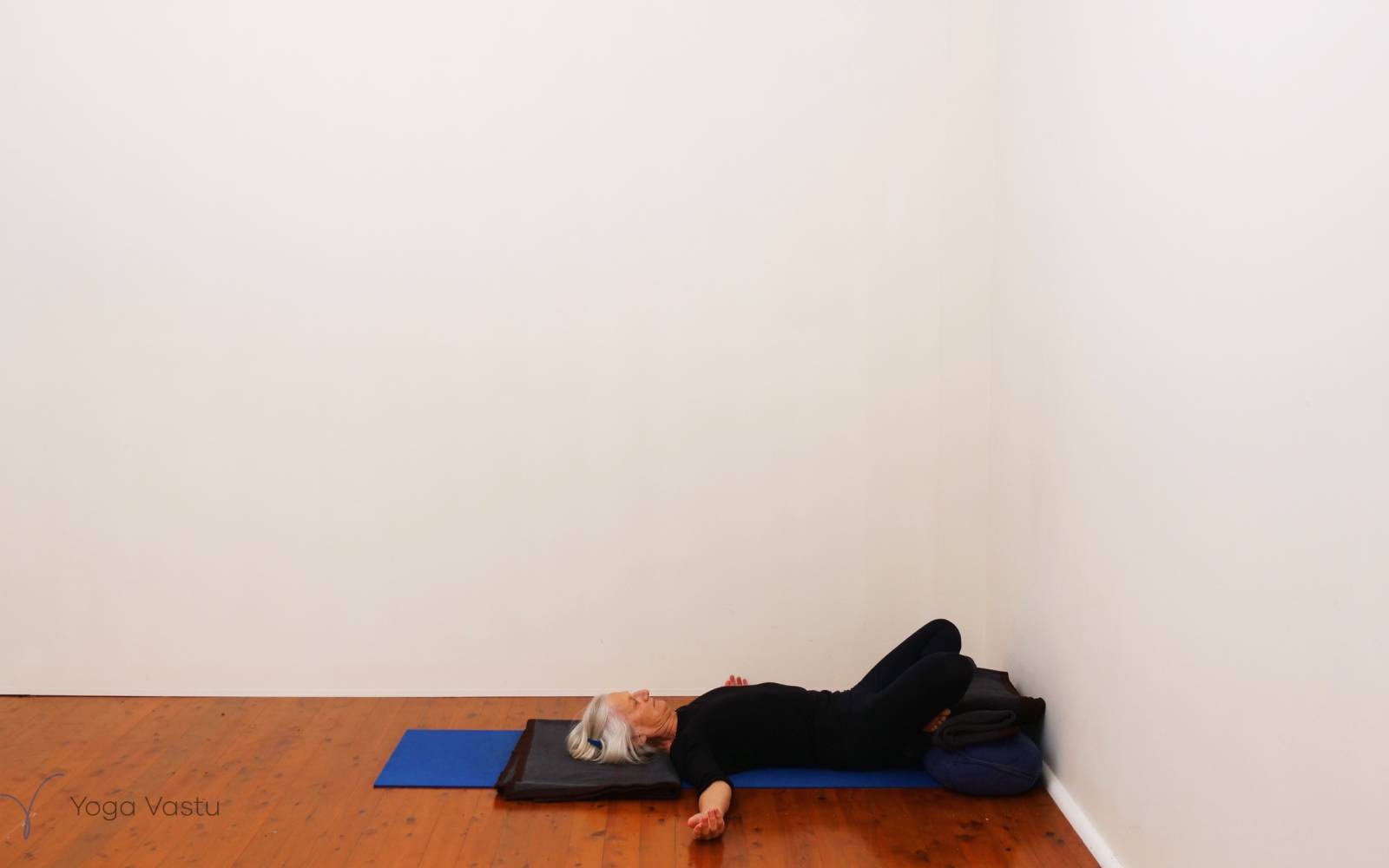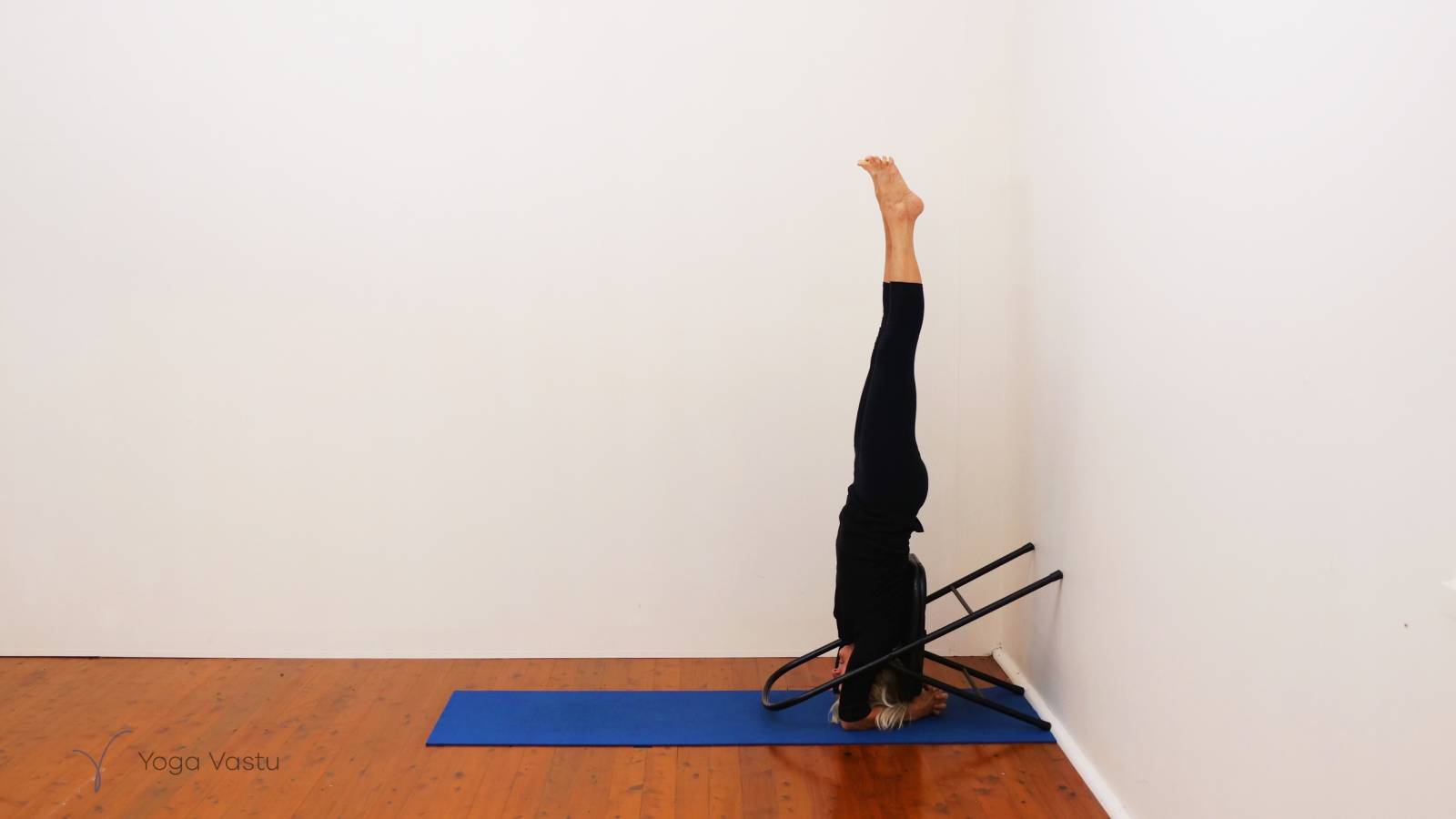This sequence aims to combine two ways of practising: uplifting our energy and quietening our mind. These are, in truth, common goals in all yoga sessions. Here though there is a more explicit combination of opening out and looking inwards. The outward-facing postures are balanced by the more inward-turning poses.
Start off in Supta Baddhakonasana, lying back over a bolster or folded blanket. Notice how this opens the chest which brings positivity, and then also how it spreads the diaphragm which allows for a smooth and steady breath.
Come up to forward Virasana and then go straight to Adho Mukha Svanasana (Dogpose) on the breath, 6-8 times. Release and go to Virasana forward. Then turn, and placing the hands to the wall, go to Adho Mukha Svansana with wall support. Placing the hands or feet to a support creates a feeling of stability.
Stand and face the wall for Ardha Uttanasana, half Uttanasana, with the hands at hip height to the wall.
Then turn, and step up the wall for a Handstand preparation. This pose creates lift with a sense of strength and stability coming into the arms.
Set your mat up horizontally against the wall for standing poses with wall support.
Each pose will be done twice: back to the wall to create a full opening as we roll the top shoulder and head back to the wall, and then facing the wall which brings quietness as we are brought more inside ourselves. The wall now offers a stable and more comforting support.
Start with Trikonasana, then Parsvakonasana, Ardha Chandrasana and finally Prasarita Padottanasana. Notice the difference in what the poses bring when you have the back to the wall and then turning into the wall.
Now take a chair and set up for a chair supported Sirsasana (headstand). First, a preparation to feel the stability and opening given to the back ribs by the chair seat, and then going up, if ready, to get the lift of full Sirsasana.
Now come to the floor for a few supported forward bends.
Triangmukhaikapada Paschimottanasana, resting the forehead to a bolster or to the chair. Change legs.
Then go to Paschimottanasana with head support.
To finish, set up for Viparita Karani. The session ends with this uplifting but quietening pose. There is rest for the legs, softness for the diaphragm while still keeping the chest supported and open. This creates freedom and ease for the exhalation in particular, which settles the nerves.
Slide the buttocks back onto the floor and resting the knees and lower legs onto the bolster stay here for Savasana.
Video stills from this sequence
